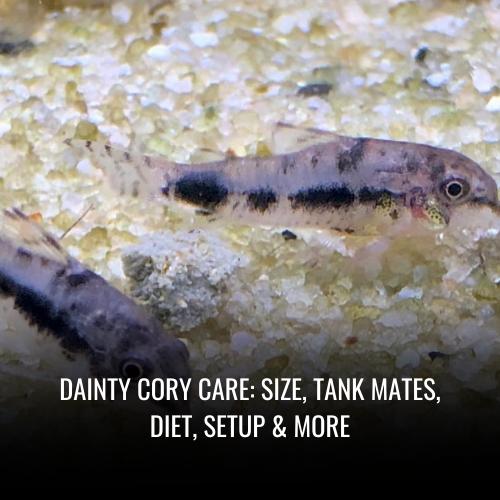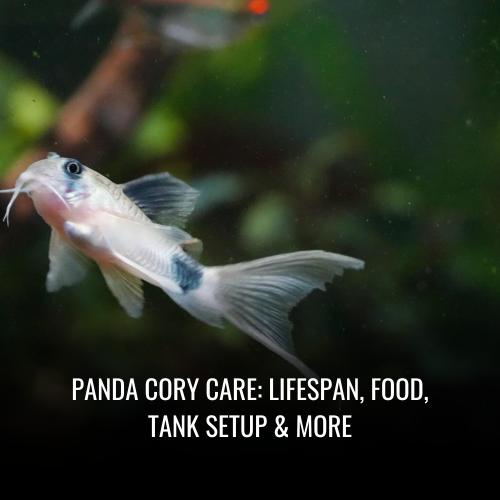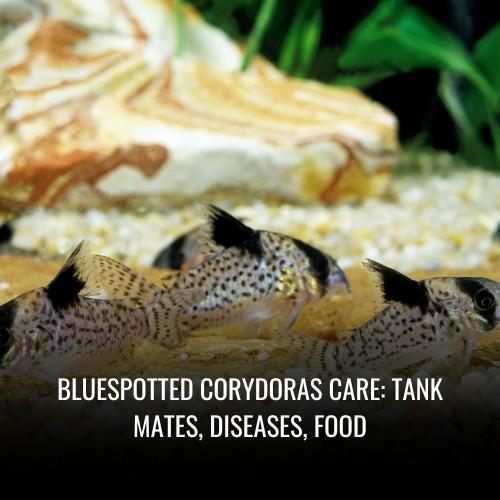The Black Banded Leporinus, scientifically known as Leporinus fasciatus, is a striking freshwater fish renowned for its distinctive vertical black bands against a beige body. Originating from the diverse aquatic environments of Central and South America, these fish are a vibrant addition to any tank.
With a recommended pH range of 5.5 to 7.5, water hardness between 2 to 10 dGH, and a temperature preference of 23-27°C (73-81°F), they are quite adaptable. Known for their unique behavior, juvenile and adult females often display a fascinating headstand position among crevices, earning them the moniker “Banded Headstanders.”
Black Banded Leporinus Profile
| Scientific name | Leporinus fasciatus |
| Common name | Black Banded Leporinus |
| Family | Anostomidae |
| Usual size in fish tanks | 10-12 inches (25-30 cm) |
| Recommended pH range | 5.5-7.5 |
| Recommended water hardness (dGH) | 2-10 |
| Recommended temperature | 23-27°C (73-81°F) |
| Reproduction | External fertilization, oviparous species |
| Origin | Central and South America |
| Temperament to its own species | Aggressive |
| Temperament toward other fish species | Aggressive |
| Usual place in the tank | Middle to bottom layers |
| Lifespan | Up to 5 years |
| Tank size requirement | Minimum 55-gallon tank |
| Filtration system | Robust filtration system |
| Sexual dimorphism | Present (subtle) |
| Substrate cleaning | Natural tendency to sift through substrate, requires clean and well-maintained bottom layer |
Given their nature, the Black Banded Leporinus should be kept among similarly sized and temperament fish to ensure a harmonious communal life. With proper care and attention to dietary and environmental needs, these striped fish can be a durable and captivating component of any aquarium.
Scientific Name
The Black Banded Leporinus, scientifically named Leporinus fasciatus, is a member of the Anostomidae family, embraced by the Leporinus genus known for its distinctively patterned fish. The species epithet “fasciatus” pays homage to the striking black vertical stripes adorning its body, originating from the Latin “fascia,” which translates to “band” or “stripe.” This nomenclature highlights the fish’s eye-catching, banded appearance, making it a standout in any aquarium setting.
Taxonomic Classification:
| Kingdom | Phylum | Class | Order | Family | Genus | Species |
|---|---|---|---|---|---|---|
| Animalia | Chordata | Actinopterygii | Characiformes | Anostomidae | Leporinus | fasciatus |
The precise naming and classification of the Black Banded Leporinus reflect not only its physical characteristics but also its place amongst the broad spectrum of Characiform fish, emphasizing its scientifically acknowledged identity.
Average Size
The Black Banded Leporinus, known for its distinct black stripes on a beige body, grows to a notable size, with both male and female reaching an average length of 9.8 inches (25 centimeters). Their considerable size contributes to their visible prominence in a freshwater tank environment.
| Average Size | 9.8 inches (25 centimeters) |
|---|---|
| Male | Similar to Female |
| Growth Potential | Substantial |
In a home aquarium, these striped fish demand adequate swimming space to thrive. Their substantial length requires a spacious tank to accommodate their full adult size. Prospective fishkeepers should plan for the species’ future growth, ensuring a comfortable and stress-free environment. When housed properly, the Black Banded Leporinus can flourish, becoming a captivating feature of any freshwater aquarium assembly.
- Ensure a suitable tank size for full-grown Black Banded Leporinus, up to 9.8 inches.
- Account for size potential in tank planning for these impressively long inhabitants.
Lifespan
| Lifespan Potential | 5+ years with optimal care |
|---|---|
| Influencing Factors | Tank Size, Water Quality, Diet, Stress Reduction |
The Black Banded Leporinus, as a resident of freshwater aquaria, requires conscientious care to reach and possibly exceed a lifespan of five years. A thriving life for these banded beauties hinges on various aspects of their environment.
Optimal longevity is achieved through a consistent routine that prioritizes a spacious aquarium, mimicking their natural habitat of flowing rivers in South America. The water quality also demands regular attention, with diligent monitoring and maintenance helping to stave off diseases. A balanced diet that closely imitates their diverse South American diet—including plant matter and a variety of foods—is key.
Checklist for Lifespan Enhancement:
- Spacious tank accommodating swimming space
- High-quality, stable water parameters
- Balanced, nutrient-rich diet
- Regular health check-ups and prompt treatment
Proactive care, coupled with a vigilant eye for behavioral changes or physical signs of distress in your Black Banded Leporinus (Leporinus fasciatus), lays the groundwork for a robust and enduring life in captivity.
Natural Habitat
The enigmatic Black Banded Leporinus, a sight to behold in its indigenous realms, thrives in the dynamic waters of Central South America. It calls the soft, acidic currents of the renowned Amazon River Basin home, with a distinct preference for the Orinoco River’s channels and tributaries.
Habitat Characteristics:
| Feature | Description |
|---|---|
| Primary Habitat | Fast-moving river channels, tributaries |
| Adaptations | Migratory behavior during the rainy season |
| Location | Guianas to La Plata basin in Central South America |
| Maintenance Zone | Benthic layer (close to bottom) |
| Seasonal Habitat | Flooded forest areas |
| Diet | Algae, plant matter, worms, crustaceans, small fish |
In the luxuriant time of rains, Black Banded Leporinus grace flooded forests, a testament to their adaptability and survival prowess. These striped fish seek refuge in the protective sand hollows of riverbeds, primarily foraging near the water surface for a diverse menu that fortifies their ecosystem role.
Appearance
The Black Banded Leporinus, known scientifically as Leporinus fasciatus, captivates enthusiasts with its vivid and contrasting patterning. The base coloration of beige serves as a canvas for the species’ namesake feature: a series of black vertical bands that envelop its body.
Typically, adults reach about 8 inches (20 cm) in length, and they boast a slender, torpedo-like body reflecting an efficient design for life in flowing waters. This fish’s agile and lithe build is further exemplified by its well-defined fins. The subtly scaled skin enhances hydrodynamics, allowing for seamless propulsion.
| Fin Type | Description |
|---|---|
| Dorsal | Prominent, aiding in navigation |
| Anal | Delicate, contributing to stability |
| Pectoral | Well-developed, facilitating movement |
The Black Banded Leporinus’ elegant movement is a visual delight, as its form and fins harmonize to produce graceful and fluid swimming. Its unique appearance not only mesmerizes onlookers but also elegantly fulfills its ecological niche as a dynamic part of South America’s freshwater ecosystems.
Behavior & Temperament
The Black Banded Leporinus, notable for its charismatic black and yellow bands, exhibits a complex array of behaviors that aquarium enthusiasts should be mindful of. As this species matures, it becomes increasingly territorial and may exhibit aggressive tendencies, particularly in smaller aquariums. Ensuring ample space is crucial for the well-being of these active swimmers.
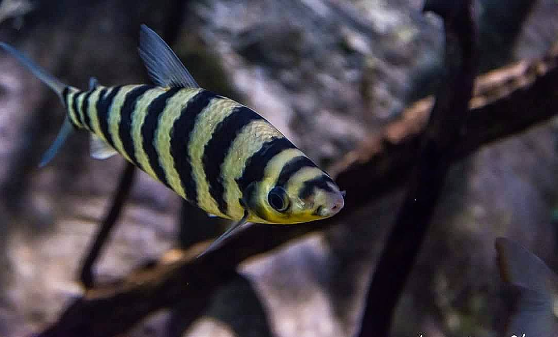
Are Black Banded Leporinus Fin Nippers?
Indeed, Black Banded Leporinus are known as fin nippers, an attribute that should be taken seriously by hobbyists. Their sharp teeth and natural inclination to nip fins make them unsuitable tank mates for fish with long, decorative fins such as bettas and angelfish. This behavior is not merely for nuisance’s sake but stems from their instinctive territorial and dominance-establishing behaviors observed in their natural habitat. Thus, in choosing tank mates, special care must be taken to prevent stress and harm to other fish.
Are Black Banded Leporinus Aggressive To Each Other & Other Fish?
While not overly aggressive by nature, Black Banded Leporinus do manifest a need for dominance within their environment. They display territorial behavior, often defining a specific space within the aquarium as their own. When confined in groups, especially in small numbers, they can become confrontational towards each other and other aquarium inhabitants. This behavior underscores the importance of suitable tank size and compatible tank mate selection to diffuse aggression and maintain a peaceful aquatic community.
Are Black Banded Leporinus Friendly To Each Other & Other Fish?
In their natural habitats and when kept in adequate group sizes and tank conditions, Black Banded Leporinus can display a friendly demeanor towards one another and coexist peacefully with other similarly sized and tempered fish species. However, when housed individually or in smaller groups, their behavior can shift towards the territorial and aggressive end of the spectrum. Proper group sizing helps to disperse aggression and foster a sociable atmosphere akin to their wild congregations.
Are Black Banded Leporinus Schooling Fish?
Black Banded Leporinus are inherently gregarious, often seen schooling in their wild environs. This schooling instinct carries into the aquarium setting, where they may either be kept solo or in larger groups. Housing them singularly can lead to diminished social interaction and require careful tank mate choice. Conversely, introducing a group of at least 8 can reduce individual aggression and emulate their natural social structure.
Can You Have Just One Black Banded Leporinus In The Tank?
It is possible to keep a solitary Black Banded Leporinus in a tank, provided the environment caters to its needs for exploration and mental stimulation. A solitary existence may result in a shyer fish that could benefit greatly from the presence of suitable companions if possible. Ensuring a spacious and peaceful community is key to the welfare of a single Black Banded Leporinus.
Do Black Banded Leporinus Need To Be In Groups?
While Black Banded Leporinus can adapt to various social arrangements, their natural predisposition is to socialize within groups. Maintaining a shoal of at least 5 individuals is beneficial, curbing aggressive tendencies and fostering a lively display. Group interactions can enhance the tank’s dynamics and reduce stress, contributing positively to their overall health. Careful selection of tank mates becomes essential in these group settings to maintain balance and avert aggression.
Food & Diet
The Black Banded Leporinus (Leporinus fasciatus) showcases omnivorous tendencies, with a diverse palate that can include various foods ranging from algae to small invertebrates. Given their South American origins, these fish have adapted to consume a mix of vegetation and protein, allowing them to thrive in a wide range of environments.
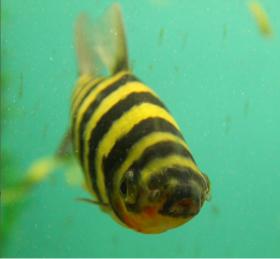
Do Black banded leporinus Eat Algae?
Yes, Black Banded Leporinus are known to eat algae. In the vast waterways of Central and South America, they frequently graze on algae as a significant portion of their diet, which is rich in plant-based matter. In the aquarium setting, these fish may continue to exhibit this natural foraging behavior and can benefit from algae’s nutritional offerings, making algae wafers a suitable addition to their diet. However, to ensure a balanced intake, it’s vital to offer a variety of foods that align with their omnivorous needs.
Do Black banded leporinus Eat Shrimp?
Shrimp can be a delightful part of the Black Banded Leporinus’s menu. As omnivores, they appreciate the protein shrimp offers, but it’s crucial to serve it in moderation. Excessive protein from sources like shrimp may challenge their digestive system, so it’s best incorporated as a portion of a well-rounded diet that predominantly consists of plant-based foods.
Do Black banded leporinus Eat Bloodworms?
Black Banded Leporinus will consume bloodworms eagerly. These creatures serve as an excellent protein source that echoes their instinctive dietary patterns in the wild. Bloodworms, ideally served as a periodic treat rather than a staple, can add variety to their diet and furnish essential nutrients they would naturally obtain from their diverse food sources.
Do Black banded leporinus Eat Mosquito Larvae?
Mosquito larvae are indeed on the Black Banded Leporinus’s culinary radar. In their natural habitats, these fish often pursue such larvae, which are packed with proteins, aiding their growth and vitality. In captivity, incorporating mosquito larvae into their diet can offer a nutritious complement to their regular feeding regime.
Do Black banded leporinus Eat Planaria?
Being adaptable omnivores, Black Banded Leporinus might consume small organisms like planaria, which occur in their natural and aquarium environments. Nonetheless, it’s essential to monitor their intake to prevent reliance on any single food source, ensuring they receive a balanced mix of nutrients.
Do Black banded leporinus Eat Plants?
Black Black-banded leporinus do partake in eating plants, showing a natural inclination towards vegetative matter as part of their diet. They might occasionally nip at live plants in the tank, so it’s imperative to provide a variety of plant-based foods like boiled peas, spinach leaves, and chickweed to satiate their herbivorous appetite, which benefits their health and replicates their wild dietary habits.
Sexing: Male vs Female
Determining the sex of Black Banded Leporinus can be quite a puzzle until they hit maturity. Only once they are fully grown do the physical differences between males and females become apparent. Typically, an adult female Black Banded Leporinus is recognizably larger than her male counterparts. Observers can note her rounder belly, which is especially pronounced when viewed from above.
Below is a simple reference table summarizing the visual cues for sexing Black Banded Leporinus:
| Feature | Male | Female |
|---|---|---|
| Body Shape | Slimmer and Streamlined | Rounder Belly |
| Size | Smaller | Larger |
| Belly Shape | Flatter | More Pronounced/ Rounded |
By keeping an eye out for these size and body shape clues, aquarists can effectively identify the sex of their Black Banded Leporinus once they reach adulthood.
Black banded leporinus Tank Mates
When selecting tank mates for Black Banded Leporinus, it is crucial to consider compatibility to ensure a harmonious aquarium. These fish thrive alongside others of a similar size and activity level, which helps to minimize aggression and prevent predation.
In a spacious tank, housing a group of Black Banded Leporinus together can be beneficial as it tends to lower their territorial tendencies, allowing for more peaceful coexistence with other fish. Nonetheless, it’s vital to steer clear of much smaller species, as Black Banded Leporinus may nip at their fins or view them as a snack.
Here’s a quick list of suitable tank mates:
- Calm Cichlids
- Reophile fish (e.g., Doradids)
- Knife Fish
- Loricariids
Remember, the right tank companions are essential for a thriving and stress-free environment.
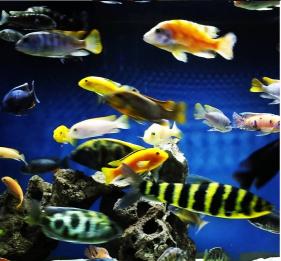
Aquarium Setup
Creating the perfect environment for Black Banded Leporinus, also known as Leporinus fasciatus, starts with a well-thought-out aquarium setup. These striking striped freshwater fish hail from the flowing rivers of South America and require conditions that closely mimic their natural habitat to thrive in captivity.
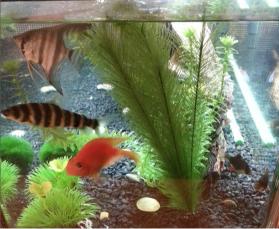
Ideal Tank Size
The active and sizeable Black black-banded leporinus demands ample space to swim and explore. A single individual should be housed in at least a 50-gallon tank. However, if you wish to keep a group of these vibrant fish, aim for a larger aquarium—ideally, one that is at least 60 inches in length to comfortably accommodate a school of 6 or more. Remember, larger tanks not only provide the necessary swimming space but also help in maintaining stable water conditions, critical for the health of the Black Banded Leporinus.
Ideal Water Parameters
Water quality is paramount when caring for Black Banded Leporinus. These fish prefer a pH range of 5.5 to 7.5 and thrive in soft to moderately hard water, with general hardness (GH) levels of 5 to 20. Total dissolved solids (TDS) should be monitored and kept within the range of 20 to 268 ppm. The ideal temperature range is 72 to 82 degrees Fahrenheit (22 to 28 degrees Celsius). Regular water changes and attentive tank maintenance ensure the Black Banded Leporinus are robust and display their full beauty.
Filtration
Given their sensitivity to pollutants, Black Banded Leporinus needs efficient and reliable filtration. A strong canister filter or high-quality hang-on-back filter that provides thorough mechanical, chemical, and biological filtration is advisable. The recommended setup will handle the moderate bioload generated by these fish and keep the water crystal clear. Ensure that the filtration system is capable of creating a steady current, as these fish are accustomed to the flowing waters of their natural environment.
Lighting
Proper lighting in the Black Banded Leporinus aquarium is essential but should be balanced to prevent stress. A natural day-night cycle should be established with full-spectrum lighting to simulate the conditions of their native rivers. Areas of diffused and shaded lighting within the tank will provide them with spots to rest and escape bright light. Using programmable LED lighting can offer flexible settings to adjust brightness and color spectrum, which highlights the fish’s natural hues and contributes to their overall well-being.
Common Possible Diseases & Prevention
Despite their resilience, Black Banded Leporinus (Leporinus fasciatus) may face health issues like skin flukes, parasitic infestations, and bacterial infections. However, proper tank management minimizes these risks significantly.
Preventative Measures:
- Quarantine: New additions to the aquarium, including fish, plants, and decorations, should be quarantined and thoroughly cleaned before introduction to prevent the introduction of diseases.
- Observation: Regular observance of fish behavior and appearance is key to early detection of health issues.
- Environment: Replicating the natural habitat with optimal water parameters and providing a balanced diet contributes to the fish’s stress reduction, enhancing their immune system.
- Prompt Treatment: At the first sign of ailment, isolate the afflicted fish and administer suitable treatment to prevent disease spread.
A proactive approach to health maintenance ensures that the Black Banded Leporinus remains healthy. By keeping their environment clean and stable, and by being vigilant for early signs of illness, aquarists can provide these energetic and hardy fish with a thriving life in their freshwater aquarium.
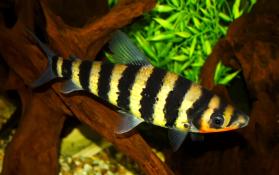
Breeding Black banded Leporinus in Aquarium
Breeding Black Banded Leporinus (Leporinus fasciatus) in captivity presents an engaging challenge for aquarists. These fish exhibit oviparous reproduction, laying eggs that are subsequently fertilized by the male.
Key Reproduction Steps:
- Nesting: The male prepares a designated nesting site, a clear indication they are ready for the breeding process.
- Egg Laying: The female deposits her eggs within the carefully arranged nest.
- Fertilization: Males then fertilize the eggs, embracing their role as protectors and caretakers of the future offspring.
- Egg Care: Post-fertilization, the male assumes responsibility for egg safety, diligently watching over the developing brood.
To encourage breeding, the aquarium environment must align closely with their natural habitat. This includes:
- Water Quality: Pristine conditions, with parameters that mirror their native South American waters.
- Privacy: Sufficient cover and private spaces for nesting activities.
- Diet: Proper nutrition that ensures both male and female are in peak condition.
Breeding Environment Table:
| Criterion | Description |
|---|---|
| Water Parameters | Optimally matched to native conditions |
| Hiding Spots | Plentiful to stimulate natural nesting behaviors |
| Nutrition | Varied diet to ensure reproductive health |
By offering a conducive atmosphere for reproduction, aquarists might witness the fascinating breeding behaviors of the Black Banded Leporinus in their home aquariums.
Are Black Banded Leporinus Easy To Keep?
Black Banded Leporinus (Leporinus fasciatus), also known as Banded Leporinus, are relatively hardy fish that can adapt to a variety of water conditions. This characteristic, along with their striking appearance marked by bold black vertical bands against a beige or yellow body, makes them an attractive choice for seasoned aquarium enthusiasts. Despite their adaptability, these fish are better suited for experienced aquarists given their specific care requirements.
These striped fish need a spacious tank to accommodate their substantial size and to provide ample swimming space. A recommended tank size is a minimum of 6 feet in length, 2 feet in width, and 2 feet in height, especially because Black Banded Leporinus are known for their swift growth rate.
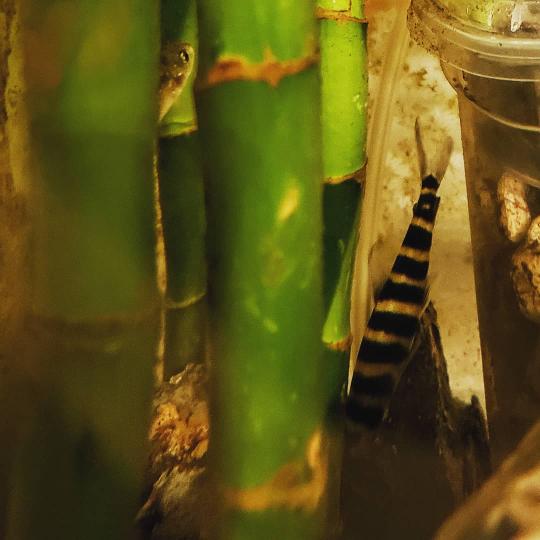
Are Black banded leporinus Sensitive To Water Changes?
Black Banded Leporinus exhibits a sensitivity to rapid alterations in water parameters, which includes fluctuations in temperature and pH levels. Originating from South America’s flowing rivers, they have a preference for stable environmental conditions that mimic their native habitat. Sudden shifts in water quality can induce stress in these fish, leaving them vulnerable to illness.
To maintain the health of Black Banded Leporinus, slow and gradual acclimation to new water conditions is vital. This approach helps prevent the shock that can occur from abrupt managerial interventions in their aquatic environment.
Are Black banded leporinus Sensitive To Ammonia?
As freshwater fish that hail from clean, oxygen-rich rivers, Black Banded Leporinus demonstrate a high sensitivity to ammonia. This chemical compound, even at low concentrations, poses a significant threat to their well-being. Exposure to elevated ammonia levels can lead to stress, respiratory distress, and gill damage, which in turn can weaken their immune systems and leave them susceptible to various diseases.
Ammonia proves particularly harmful as it disrupts the natural process of osmoregulation—the balancing of water and salts within the fish’s body. Behavioral changes, such as reduced activity and appetite, can be indicators of ammonia stress.
Therefore, regular checks on ammonia levels are imperative for the health and longevity of Black Banded Leporinus. Immediate measures should be employed to remedy any detected ammonia in the home aquarium to protect these sensitive species.
Are Black banded leporinus Sensitive To Copper?
Black Banded Leporinus are moderately sensitive to copper, a common element that can be introduced to an aquarium through various means such as tap water or copper-containing medications and treatments. Copper toxicity can adversely affect these fish, manifesting through harm to their gills and skin. Their delicate respiratory systems make them particularly vulnerable, with high copper levels capable of inflicting stress and long-term health problems.
To ensure the safety and health of these striped fish, aquarists must diligently monitor copper levels within the aquarium. The use of copper-based treatments or products should be avoided, and care must be taken when dealing with copper plumbing that may come in contact with the tank water.

